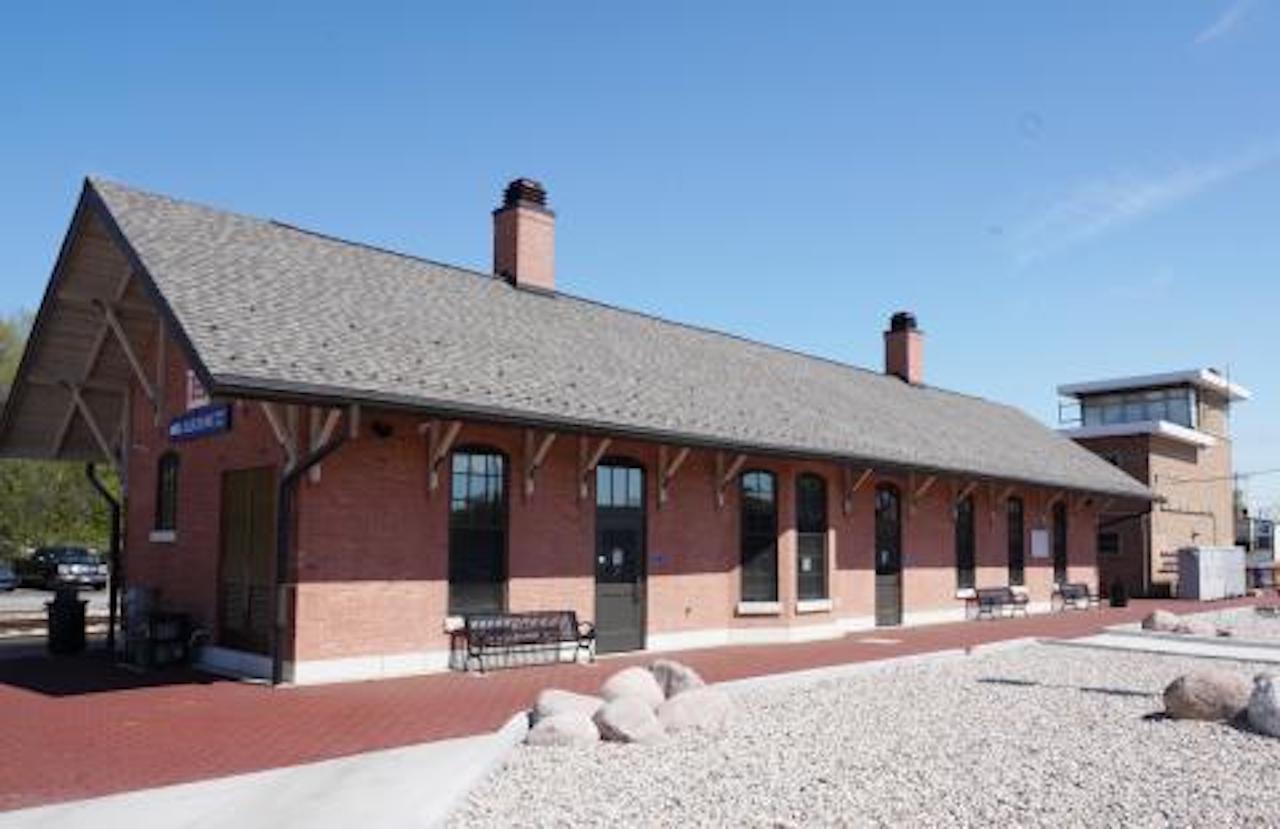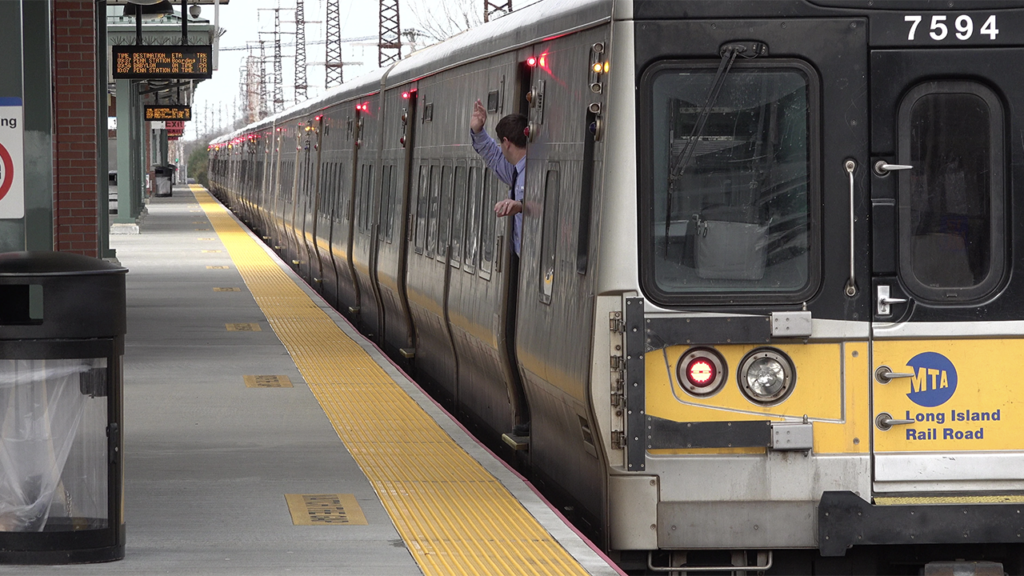
Transit Briefs: Metra, NYMTA
Written by Carolina Worrell, Senior Editor
Blue Island-Vermont Street Station (Metra photo)
Metra celebrates the completion of the newly rehabilitated Blue Island-Vermont Street Station. Also, the New York Metropolitan Transportation Authority (MTA) uses artificial intelligence (AI) to track fare evasion on its New York City Transit (NYCT) network.
Metra joined Blue Island Mayor Fred Bilotto and other dignitaries on July 21 in Blue Island, Ill., to dedicate the newly rehabilitated Blue Island-Vermont Street Station depot on the Rock Island Line.
The ribbon-cutting marks the completion of a yearlong project to restore the historic masonry structure that dates to 1868. According to Metra, the $3.7 million project included a complete interior renovation; renovation of the roof, including the replacement of gutters and downspouts; the reconstruction of the original chimneys; rehabilitation of wooden eave supports; replacement of all doors and windows; custom brick replacement and masonry staining; asbestos and lead-based paint abatement; new landscaping and site improvements; sidewalk and crosswalk improvements and repairs to meet ADA compliance for accessible routes; and new wayfinding and intermodal signs.
The work was funded by the Federal Transit Administration (FTA), Metra funds and a grant from the Regional Transportation Authority’s (RTA) Innovation, Coordination, and Enhancement (ICE) program. IHC Construction of Elgin, which committed to meeting a DBE goal of 25%, was the primary contractor for the construction. Another $700,000 will cover construction management and flagging costs.
Located 16.4 miles from LaSalle Street Station, the Blue Island-Vermont Street Station serves as a station on the Rock Island mainline and as the southern end of the line’s Beverly Branch. Under the current Metra schedule, the station is served by 74 trains each weekday and 33 trains on both Saturday and Sunday.
“Events like these highlight the important role that our partners play in helping maintain Metra’s state of good repair and making our rail system one that is customer friendly, accessible, and safe,” said Metra Executive Director/CEO Jim Derwinski. “And in the case of this project, we were also able preserve an important part of Blue Island’s history.”
“On behalf of the city of Blue Island, we are grateful to Metra and their collaborating partners for making this important investment in our city,” Mayor Bilotto said. “I specifically want to commend the Metra staff, who have been excellent partners to work with through this process. This renovation is consistent with our mission to modernize Blue Island while maintaining its historic appeal.”
“The renovation of the Blue Island Station is a just one example of how Metra—through both capital investments like this one and operational improvements—is offering more and more residents of this community and the region great reasons to pick transit over driving,” said RTA Chairman Kirk Dillard.

Surveillance software that uses AI to “spot people evading fares has been quietly rolled out” to some of NYCT’s subway stations and is “poised to be introduced to more by the end of the year,” according to public documents and government contracts obtained by NBC News.
According to a CBC News report, the system, which the city and the MTA haven’t previously acknowledged by name, “uses third-party software that its maker has touted as a way to engage law enforcement to help crack down on fare evasion.”
According to an MTA report on fare invasion, the system was in use in seven subway stations in May, and the agency expects that by the end of the year, the system will expand by “approximately two dozen more stations, with more to follow.” The report (download below) also found that the MTA lost $690 million to fare evasion in 2022.
Joana Flores, an MTA spokesperson, said the AI system “doesn’t flag fare evaders to New York police,” but she declined to comment on whether that policy could change, according to the CBC News report. A police spokesperson declined to comment.
MTA Communications Director Tim Minton said the system “tracks fare evasion to figure out how much money the subway isn’t collecting.”
“We’re using it essentially as a counting tool,” Minton said. “The objective is to determine how many people are evading the fare and how are they doing it.”
Minton said the videos are stored on the MTA’s servers and are kept “for a limited period.” New York Gov. Kathy Hochul’s office announced last year that the city’s transit systems had more than 10,000 surveillance cameras.
According to the CBC News report, “use of the software adds to what some privacy advocates see as a growing surveillance apparatus developing in New York City.”
“This is a moment where movement around the city has never been more surveilled,” said Albert Fox Cahn, Director of The Surveillance Technology Oversight Project, a nonprofit legal group that advocates for privacy rights in New York City.
According to the report, Flores confirmed that the software was created by Spanish company AWAAIT, which operates Barcelona metro trains. AWAIIT declined to comment.
A promotional video for AWAAIT’s fare evasion software, “depicts a system in which an AWAAIT system was initially used to scan riders going through the metro system and send photos of people it determined were fare evaders to the smartphones of nearby station agents.”
“Assurances from the MTA that the software wouldn’t be used to aid law enforcement have done little to encourage some privacy and civil rights advocates, who were already alarmed over previous efforts to crack down on fare evasion,” according to the report.
According to the CBC News report, a “heavily redacted” MTA contract for the AI system from July 2022, which Cahn acquired through a Freedom of Information Law request and shared with NBC News, shows that “the system was first tested in New York City in 2020, with more stations added in 2021.” The exact number of stations is redacted.
GovSpend, a database of government spending records, shows that the MTA made two purchases in 2021 for “AWAAIT Video Analytics Fare Evasion Software,” for a combined $35,335. Figures for 2022 weren’t available.
Cahn said the use of the technology to try to track fare evasion “illustrated misguided priorities,” CBC News reported.
“We keep seeing this consistent criminalization of fare evasion even though it hurts no one,” he said. “And this really just feels like politics driving bad technology and bad policy.”



